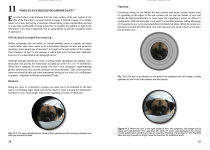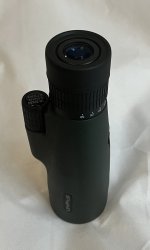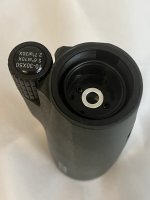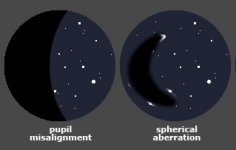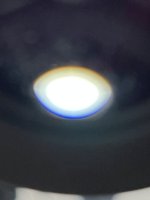kimmik
Well-known member

With some experimentation, calculations, this is a breakdown of different types of image black out that seems to me most commonly experienced when roaming the eye around looking through binoculars. SAEP being spherical aberration of exit pupil, prism vignette being the "almond" shape of the light beam arising from the periphery.
Eyepiece without SAEP:
Closer eye position - crescent
On spec - shutter
Further - counter crescent
Eyepiece with SAEP and low prism vignette:
Closer eye position - kidney
On spec - kidney + counter crescent
Further - counter curtain
Eyepiece with SAEP and stronger prism vignette:
Closer eye position - curtain
On spec - double crescent
Further - counter curtain
Best tested in bright conditions that shrink the anatomical pupil and exacerbate blackout effects. Larger exit pupil binoculars are more forgiving.
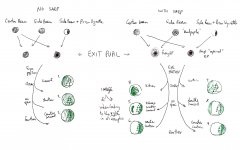
Eyepiece without SAEP:
Closer eye position - crescent
On spec - shutter
Further - counter crescent
Eyepiece with SAEP and low prism vignette:
Closer eye position - kidney
On spec - kidney + counter crescent
Further - counter curtain
Eyepiece with SAEP and stronger prism vignette:
Closer eye position - curtain
On spec - double crescent
Further - counter curtain
Best tested in bright conditions that shrink the anatomical pupil and exacerbate blackout effects. Larger exit pupil binoculars are more forgiving.





